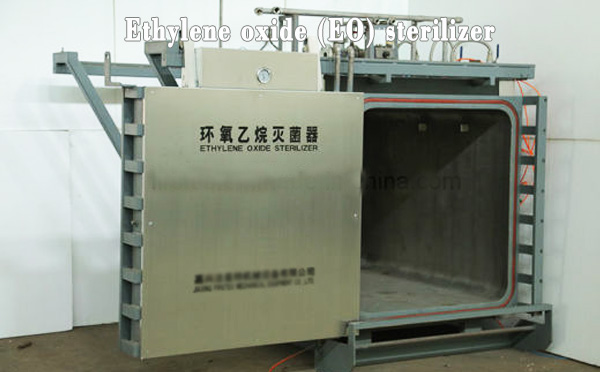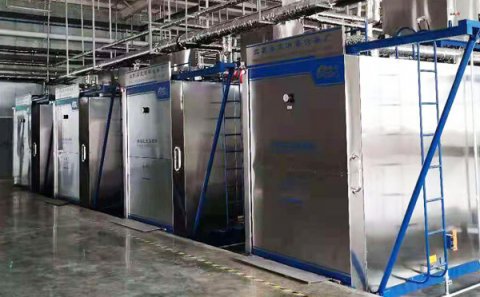
Preparation and packaging of articles before sterilization:

The articles to be sterilized must be thoroughly cleaned, and it should not be washed with normal saline. There should be no water drop or too much water on the sterilized articles to avoid dilution and hydrolysis of ethylene oxide. Ethylene oxide can be used for sterilization of almost all medical products, but it is not suitable for sterilization of food, liquid, oil, talcum powder and animal feed. The packaging materials suitable for ethylene oxide sterilization include paper, composite dialysis paper, cloth, non-woven fabric, ventilating rigid container, polyethylene, etc.; the packaging materials not suitable for ethylene oxide sterilization include metal foil, PVC, cellophane, nylon, polyester, polyvinylidene chloride, and impermeable polypropylene. The change of packaging materials shall be verified to ensure the reliability of sterilization of sterilized articles.
Loading of sterilized articles:
There should be a gap between the upper and lower contents of the articles in the sterilization cabinet (the sterilized articles should not contact the wall of the cabinet), and the articles should be placed in the metal mesh basket or on the metal mesh rack; the loading amount of the articles should not exceed 80% of the total volume in the cabinet.
Sterilization:
It shall be carried out in accordance with the operation instructions of the ethylene oxide sterilizer manufacturer; according to the different types, packages, loading capacity and methods of sterilized articles, appropriate sterilization parameters shall be selected.
1) The relationship between concentration, temperature and sterilization time: in a certain range, the increase of temperature and concentration can shorten the sterilization time. The parameters of temperature, concentration and time must be selected reasonably when using ethylene oxide for sterilization.
2) To control the relative humidity of sterilization environment and the water content of articles: the water content of bacteria and the water content of sterilization articles have a significant impact on the sterilization effect of ethylene oxide. In general, 60% - 80% relative humidity is the best. Too little water content affects the penetration of ethylene oxide and alkylation of ethylene oxide, reducing its sterilization ability; too much water content, ethylene oxide is diluted and hydrolyzed, also affecting the sterilization effect. In order to achieve the ideal humidity level, the first step is to pre wet the sterilizer, which is generally required to be placed in the environment of 50% relative humidity for at least 2 hours; the second step can use humidification device to ensure the ideal humidity level in the cabinet room.
3) Attention should be paid to the influence of bacteria external protectors on the sterilization effect: the more organic substances contained on the surface of bacteria, the more difficult it is to kill; organic substances can not only affect the penetration of ethylene oxide, but also consume part of ethylene oxide. It is difficult to kill microorganisms in inorganic salt or organic crystal with ethylene oxide. Therefore, before the sterilization of ethylene oxide, the organic and inorganic pollutants on the articles must be fully cleaned to ensure the success of sterilization.
Applicable scope of gas sterilization
Ethylene oxide does not damage the sterilized articles and has strong penetration, so most articles that are not suitable for general sterilization can be sterilized and sterilized with ethylene oxide. For example, electronic instruments, optical instruments, medical devices, books, documents, fur, cotton, chemical fiber, plastic products, wood products, ceramics and metal products, endoscopes, dialyzers and disposable medical supplies. Ethylene oxide is one of the most important low temperature sterilization methods.








Comments: